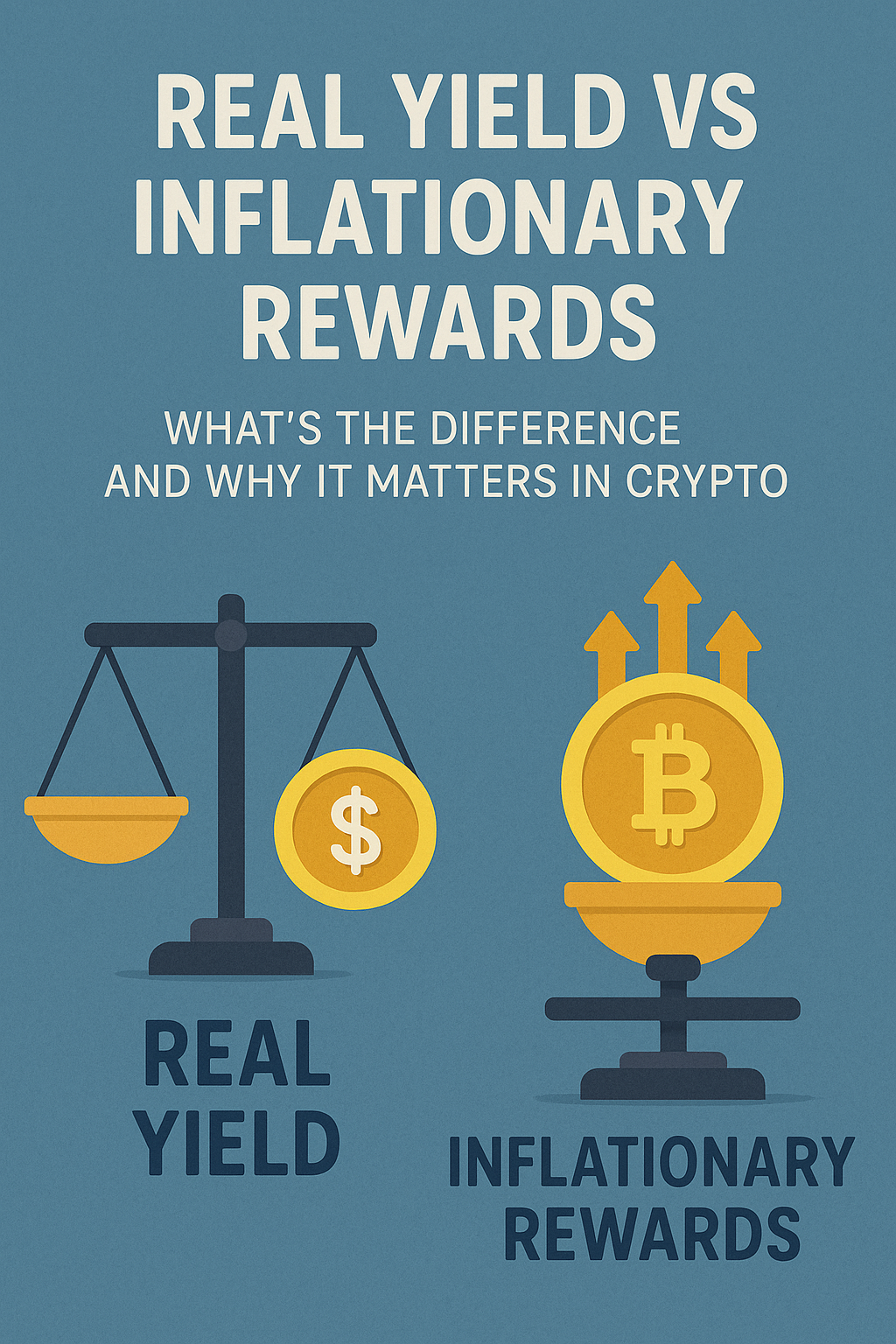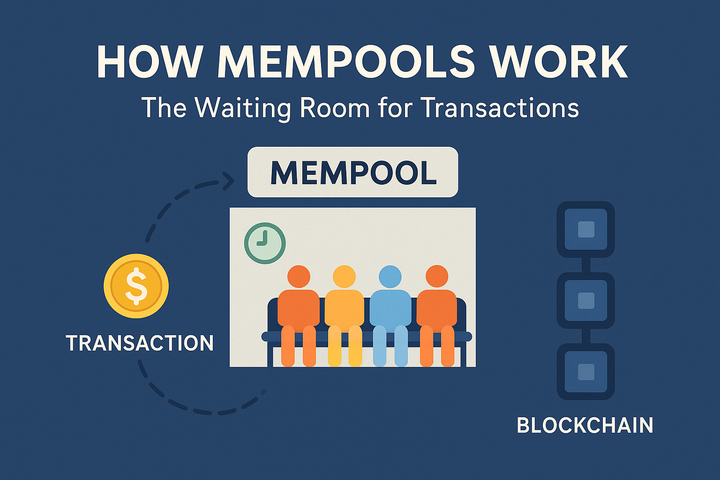Real Yield vs Inflationary Rewards: What’s the Difference and Why It Matters in Crypto

Introduction
In the early days of DeFi, yield farming was all the rage. Protocols offered sky-high returns, and users flocked in to farm tokens. But behind the APYs often lurked unsustainable token emissions, a model now widely called inflationary rewards.
Today, the narrative is shifting towards real yield, a more sustainable, revenue-backed approach to DeFi returns. But what does it really mean, and why is it winning?
What Is Inflationary Yield?
Inflationary rewards refer to yields paid out using newly minted tokens, not actual revenue. These rewards dilute the token supply, and their value depends entirely on demand keeping up with inflation, which rarely happens.
Example:
A new DeFi protocol offers 200% APY in its native token. You earn big numbers but if everyone sells, price crashes, and those rewards are worthless.
The Problem:
- Short-term hype, long-term pain
- Unsustainable tokenomics
- Constant pressure to onboard new users (Ponzi-like)
What Is Real Yield?
Real yield means returns distributed from actual protocol revenue typically in stablecoins or blue-chip tokens like ETH or USDC. This model reflects the protocol’s real economic activity, like trading fees, lending interest, or liquid staking rewards.
Example:
A DEX charges 0.3% per trade. A portion of that is shared with liquidity providers in USDC. No inflation, just profit sharing.
Why It Matters:
- No dilution: You aren’t earning from thin air
- Attracts long-term capital
- Encourages real protocol usage
Real Yield in Action
Here are examples of protocols leaning into real yield:
| Protocol | Revenue Source | Yield Paid In |
|---|---|---|
| GMX | Perpetual trading fees | ETH, AVAX |
| Pendle | Yield-stripped tokens & DeFi fees | Real assets |
| Mitosis ✅ | Cross-chain liquidity routing fees | Yield vaults in USDC, ETH |
| Synthetix | Trading fees from synths | sUSD |
These protocols don’t rely on hype. They generate value, and share it with contributors and stakers.
Real Yield vs Inflationary Rewards
| Feature | Inflationary Rewards | Real Yield |
|---|---|---|
| Source of Yield | New tokens (inflation) | Protocol revenue |
| Sustainability | Low | High |
| Token Value Impact | Dilution | Value accrual |
| Incentivizes | Speculation | Real usage |
| Long-Term Viability | Weak | Strong |
Why Real Yield is Gaining Popularity
1. Bear Market Lessons
After multiple DeFi collapses, users now value sustainability over hype.
2. Regulatory Scrutiny
Inflationary rewards look more like unregistered securities. Real yield models have clearer paths to compliance.
3. Better Tokenomics
Real yield turns tokens into revenue-generating assets, aligning user, protocol, and investor interests.
4. Composability with Mitosis
Projects like Mitosis Yield Vaults let DeFi protocols implement non-inflationary, revenue-backed incentives across chains. Mitosis’s Cross-Layer Messaging ensures seamless coordination of rewards between ecosystems.
How Mitosis Powers Real Yield
Mitosis is a modular, cross-chain liquidity protocol built to support real yield in a decentralized world.
Key Features:
- Yield Vaults – Auto-compound protocol earnings in USDC or ETH
- Cross-Layer Messaging – Route rewards and liquidity across L1s, L2s, and app chains
- Modular Infrastructure – Easily integrates with DePIN, DeFi, or gaming protocols
- Gasless Onboarding – Lower barriers for non-crypto-native users
By leveraging Mitosis Liquidity Routing, DeFi protocols can offer programmable, real-yield payouts tied to genuine usage, without creating inflationary pressure.
Challenges With Real Yield
While real yield is more sustainable, it comes with its own challenges:
- Lower APYs (initially) – Fewer speculative users
- Revenue Dependence – If the protocol isn’t used, there’s nothing to distribute
- Requires Real Utility – Teams must build products people want
Still, with tools like Mitosis, it’s easier than ever to launch real-yield-powered networks that scale.
Final Thoughts
Real yield isn’t just a buzzword, it’s a return to fundamentals. It offers users sustainable value, and helps protocols grow without relying on hyperinflation or short-term hype.
As DeFi matures, and infrastructure becomes more composable and interoperable, platforms like Mitosis will be essential in enabling fair, fast, and future-ready reward systems.
In the battle between real yield and inflationary rewards, real yield wins in the long run.
Further Reading:



Comments ()